Corporate offices are evolving beyond traditional layouts and outdated furnishings. Modern workplaces are increasingly designed to enhance productivity, foster collaboration, and promote employee well-being. As organizations recognize the importance of a conducive work environment, office furniture trends are shifting toward flexibility, sustainability, and technology integration.
Key Takeaways
- More offices are choosing sustainable furniture made from materials like bamboo and recycled wood to reduce environmental impact and support green practices.
- Ergonomic furniture, like adjustable chairs and standing desks, helps improve comfort, reduce injuries, and increase productivity by supporting better posture.
- With hybrid work on the rise, offices need flexible furniture that can be easily rearranged. Tech-integrated furniture helps employees work efficiently, whether in the office or remotely.
This article explores the top furniture trends shaping contemporary corporate offices, showcasing innovative designs that not only reflect the brand’s identity but also prioritize functionality and comfort.
1. The Rise of Ergonomic Furniture
Ergonomics aims to optimize employee comfort and performance while minimizing the risk of injury. Poor ergonomic practices can lead to a range of hazards, which are prevalent in modern work environments. Statistics indicate that ergonomic injuries significantly affect the workforce, with conditions such as carpal tunnel syndrome, bursitis, and tendinitis being common among office workers.
According to Belema Ronabere, founder of Persuasion Nation:
“The use of ergonomic furniture such as adjustable chairs and sit-stand desks reduces the strain on the body that results in a decrease of musculoskeletal disorders. For example, the team we hired underwent a 15% increase in productivity after the implementation of workstations.”
Below are some examples of ergonomic furniture options you can find in modern offices:

Discover the latest in furniture trends and transform your workspace with an ergonomic office chair designed for comfort and support.
2. Sustainable and Eco-Friendly Furniture
As businesses become more aware of their environmental impact, the demand for sustainable and eco-friendly furniture has surged. Modern corporate offices are increasingly seeking furniture options that align with their values and contribute to a greener future. The transformation towards sustainability is particularly evident in the furnishing industry. A recent report highlighted that the market for sustainable furniture was valued at approximately $43.26 billion in 2022. The demand for eco-friendly solutions is propelled by various factors, including green housing projects, resource-saving packaging, and a preference for refurbished furniture.
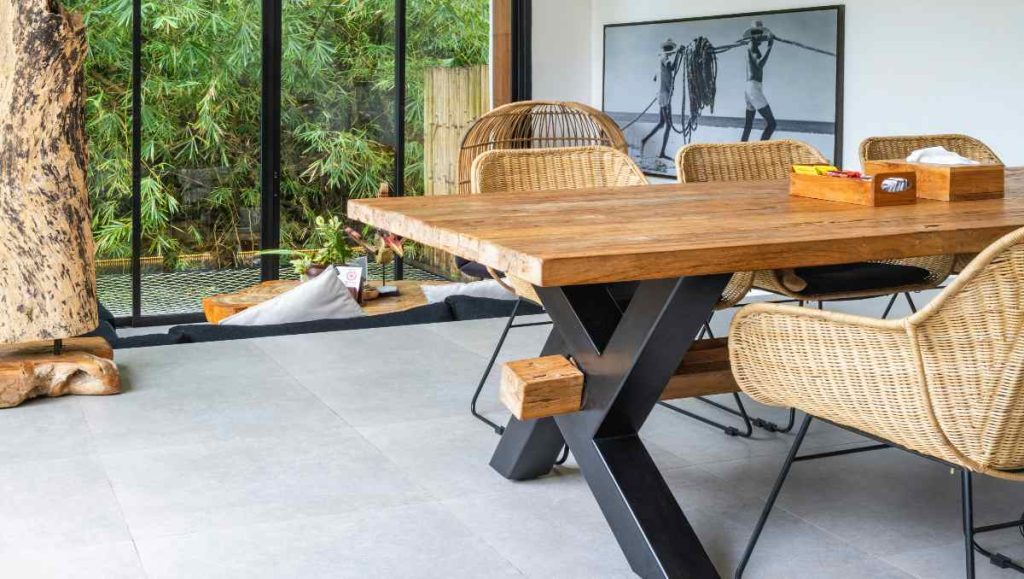
Various materials are used in the production of sustainable furniture, including:
- Bamboo: A fast-growing, renewable resource that is strong and lightweight, making it an excellent alternative to traditional dark woods.
- Recycled Wood: Furniture made from reclaimed hardwood reduces waste and preserves existing resources.
- Recycled Metal: Using recycled metal for furniture frames and components decreases the demand for new raw materials.
- Organic Fabrics: Textiles made from organic cotton, hemp, or linen minimize the use of pesticides and chemicals.
- Cork: Harvested from the bark of cork oak trees, cork is renewable, biodegradable, and provides excellent insulation properties.
3. Flexible and Modular Furniture Designs
As the nature of work continues to evolve, flexible and modular furniture designs are becoming essential in modern corporate offices. Flexible workspaces are crucial for fostering creativity, collaboration, and productivity. The rise of hybrid work is reshaping office design, with 29% of workers now preferring a hybrid model over fully remote roles. Hybrid-friendly office layouts combine in-office and remote workspaces, replacing traditional desk setups with adaptable, collaborative areas. Many offices are also choosing seating that combines comfort with style. An excellent example is the aesthetic ergonomic office chair, which offers both adjustability and a modern design, making it ideal for today’s flexible, hybrid work environments.
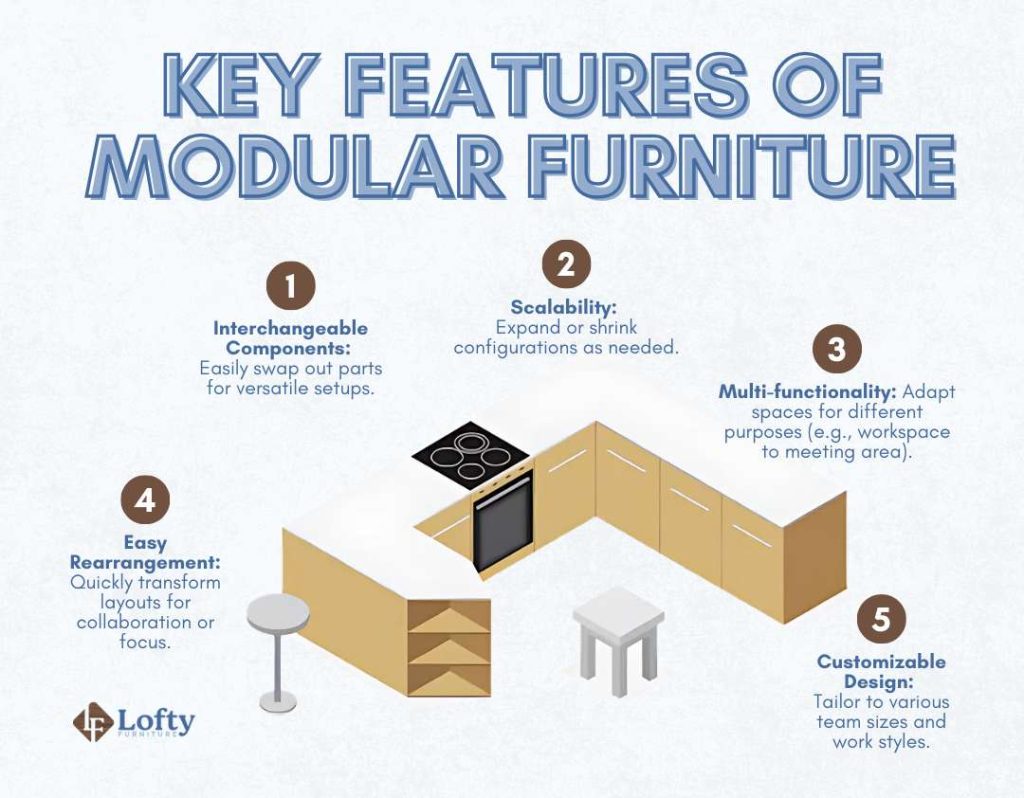
4. Incorporating Technology into Office Furniture
Ergonomic technology is changing the way we work by making workplace furniture smarter and more flexible. Office cubicles and modern desks now come with adjustable heights, built-in charging ports, and touch controls, while ergonomic chairs and ergonomic desk accessories are being equipped with tech to improve comfort and support. Collaborative spaces are also getting a tech upgrade, with digital whiteboards, video conferencing tools, and interactive displays to help teams work together seamlessly. These tech features make workspaces more efficient and personalized, allowing employees to stay focused and productive throughout the day.
Here’s a video from Autonomous on incorporating smart furniture solutions in your modern offices.
Take your workspace to the next level with a balance board!
Improve posture, boost circulation, and stay active while you work.
5. Biophilic Design Elements
Biophilic design is an innovative approach that seeks to connect people with nature through the built environment. This design philosophy incorporates natural elements, materials, and light to create spaces that promote well-being, enhance productivity, and foster a deeper connection to the natural world. This approach often includes features like indoor gardens, natural light, water elements, and organic materials, which serve to bridge the gap between indoor and outdoor environments.
Research supports the positive effects of biophilic design on mental health and productivity. By integrating nature into the built environment, biophilic design provides a constant connection to stress-reducing stimuli, fostering a more relaxed and productive atmosphere.
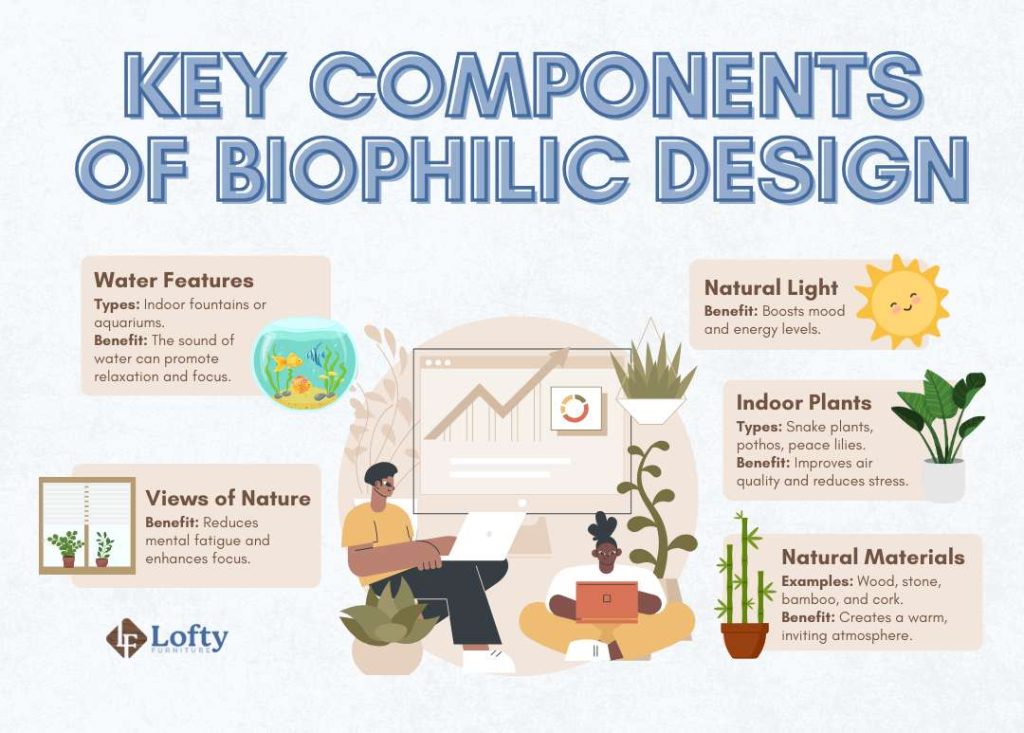
6. Vibrant Colors and Bold Patterns in Office Furniture
The use of vibrant colors and bold patterns in office furniture is a powerful way to create visually engaging and energizing work environments. When applied thoughtfully, these design elements can boost morale, encourage creativity, and foster a dynamic atmosphere that supports productivity. In workplace design, color choices are no longer restricted to neutral or muted tones. Instead, vibrant colors are being integrated to create spaces that feel more alive and inspiring.
Here are some color choices and how they can influence corporate offices:
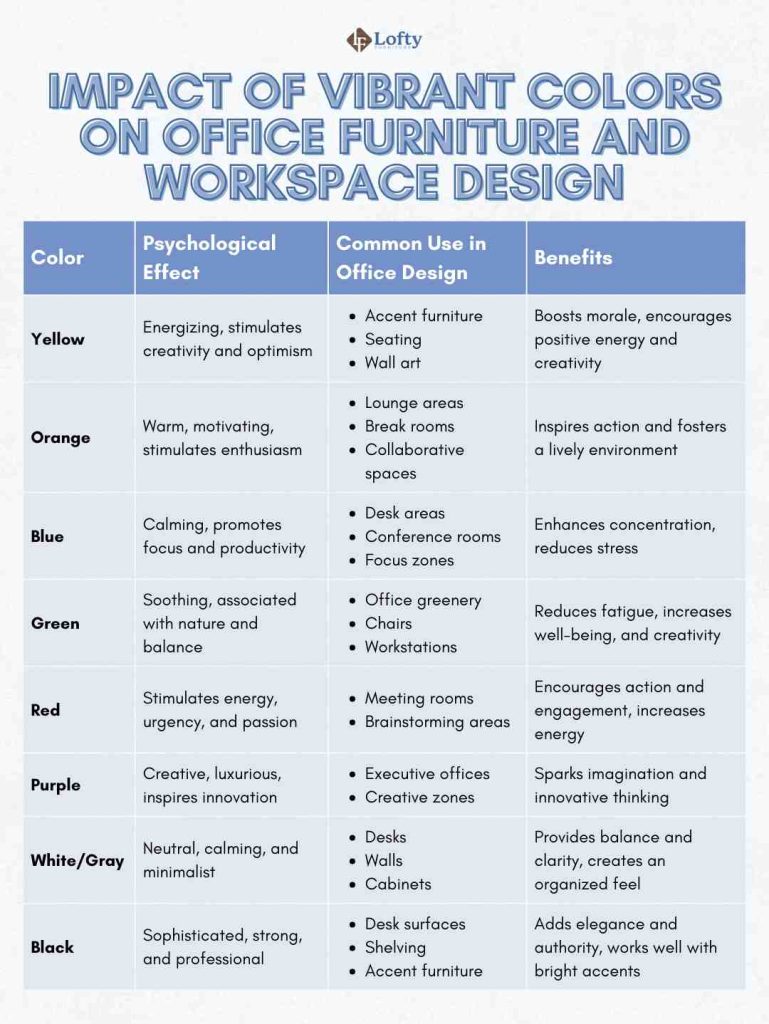
Curious how your desks and chairs impact your startup’s balance sheet? See if office furniture qualifies as an asset.
Conclusion
Corporate office furniture trends are shifting to meet the demands of a more dynamic, health-conscious, and eco-friendly workforce. These trends reflect a new era of corporate office design that is people-centered, environmentally conscious, and adaptable. By implementing these trends, companies can create workspaces that support both individual well-being and organizational success, helping to enhance productivity, morale, and even brand perception.
FAQs
How does sustainable furniture impact corporate branding?
Sustainable furniture aligns a company with eco-friendly practices, sending a message that the organization values environmental responsibility.
What is modular furniture, and how does it work in modern offices?
Modular furniture consists of pieces that can be rearranged, combined, or adjusted to suit different needs. In modern offices, modular designs make it easy to adapt spaces for various functions, from collaborative meetings to individual work.
How can biophilic design improve employee well-being?
Biophilic design, which incorporates natural elements into the workspace, can reduce stress, improve mood, and enhance overall mental health. Features like natural light, plants, and organic materials create a calming atmosphere, fostering a sense of connection with nature that has been shown to increase relaxation, focus, and productivity among employees.
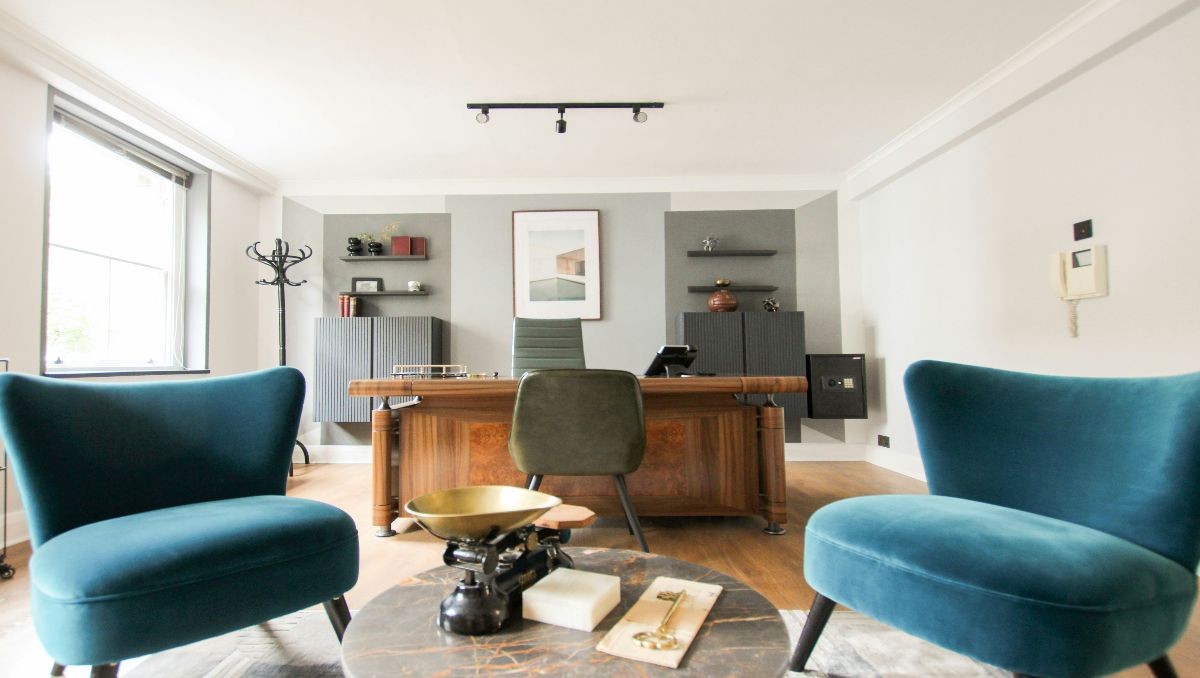
Please email me when you get a moment.
wertyuioes’d’f’g’h’j’d’f’g’h’f’g’h’jrsdfgdfgwertyuetyusdfghdfg